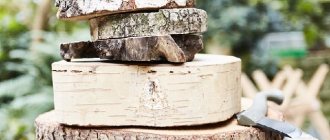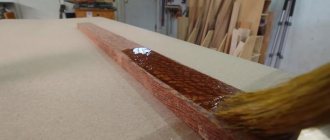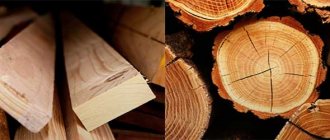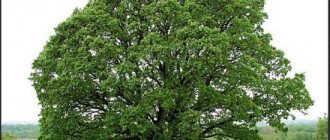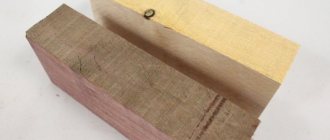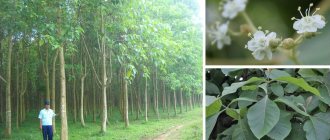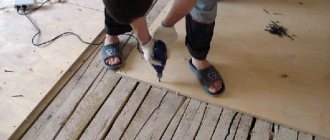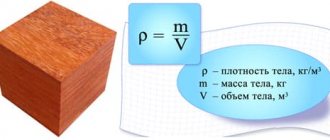Deciduous trees are used in the design of most garden plots. Some are planted for decorative purposes, others are fruit-bearing, in order to obtain a rich harvest.
Deciduous garden crops include flowering trees and bushes. These plants appeared later than conifers. Also read the article about coniferous trees. The fruits on the branches are formed as a result of the development of the ovary.
Deciduous trees vary in type of foliage, wood properties, and cultural value. Some rocks are also used to make spices.
Deciduous trees
Deciduous trees are a necessary attribute for garden compositions. In winter and summer, their structure is different.
Oak
Oak is a plant found from the north to the subtropics.
Several varieties also grow in tropical areas.
There are about 600 species in total.
Three types of oak are common in Russia: pedunculate in the European part, rocky in the Caucasus and Mongolian in the Far East.
| View | Description | Leaves |
| Petiolate | It grows throughout all European territories up to the Urals. A light-loving, long-lived plant reaching 40 m in height. Prefers moist soil. Planting of acorns is carried out in autumn or late spring. | Oblong, with small petioles, dense, green. |
| Red | A short North American tree (up to 25 m), preferring light areas with soil of moderate humidity. Lifespan is up to 2000 years. Resistant to diseases, not susceptible to pests. The crown is dense, tent-shaped. | After blooming they are red, later green. In autumn, rich brown or brown. |
| Mongolian | Grows up to 30 m. In the coastal zone it is low and shrubby. Resistant to cold and strong winds. | Dense, with a small petiole, tapering towards the base. |
Acacia
Acacia originated on the North American continent, but is now distributed throughout the globe.
Height up to 25 m, but shrubby trees are often found.
| View | Description | Leaves |
| street | Heat-loving, easily tolerates dry summers, but does not winter well at low temperatures. The flowers are fragrant, white, up to 20 cm. | Unpaired, dark green. |
| Golden | Bush-like, up to 9-12 m. Inflorescences white or yellow. Flowering occurs at the end of spring or the first weeks of summer. | Light green, turns yellow in autumn. |
| Silk (Lenkoran) | A low tree (6-9 m) with a spreading crown. Blooms in mid-summer, flowers are white and pink. | Lacey, blooms late and remains on the tree until November. |
Birch
One of the most common trees in Russia is birch.
In Slavic culture, products made from this plant were endowed with magical properties. In folk and traditional medicine, buds, leaves, and tree bark are used. Birch sap also has healing qualities.
About 120 species of this tree are found in nature. Some of them are dwarf, others grow up to 20 m or more. Birch trees can be a good addition to the landscape design of the area.
| View | Description | Leaves |
| Dwarf | Western European shrub plant growing in the tundra zone, alpine foothills, and marshy areas. Hardy, winters well in cold weather. | Round, often wider than long. |
| Bolotnaya | The bark is white, turning gray over time. Height up to 20 m. Branches always point upward. Loves moist areas with low sand content in the soil. | Elliptical, small, bright green. |
| Weeping | An elegant plant with a dense umbrella-shaped crown and downward-pointing branches. Unpretentious, resistant to cold winters. | Round, dark green, small. |
Maple
Maple is a long-living tree with beautiful foliage that effectively changes color with the onset of autumn. The maple leaf is featured on the national flag of Canada.
Most of the species are of medium height, but there are also shrubby forms. Several varieties of evergreen maples also grow in the Mediterranean.
| View | Description | Leaves |
| Field (plain) | A tree with a straight or slightly curved trunk and a developed root system. Does well in urban environments. | Bright green, five-lobed, in autumn the color changes to yellow, orange, brown, reddish. |
| Globular | Decorative subspecies of maple, bred to decorate parks, alleys, and home gardens. The natural shape of the crown is spherical and does not require pruning of branches. | Sharp, five-lobed, glossy. |
| Red | Popular in Japan, but suitable for growing in the climate of central Russia. | Red, in some species purple or bluish. |
Linden
Linden is a plant of the mallow family, which is often planted in cities.
Takes root well in parks. Prefers moist soils, temperate and subtropical climate zones.
| View | Description | Leaves |
| large-leaved | Distributed in Central Russia, it has a widely pyramidal crown. Prefers dark areas. | Oval-shaped, dark green, the underside of the leaf is lighter than the top. |
| Crimean | Suitable for cold regions, unpretentious. The inflorescences are small, yellow-white. | Heart-shaped, rich green color. |
| Small-leaved | It blooms in July for about a month. Can grow in sun and shade. | Small, heart-shaped, with reddish corners. |
Willow
Imprints of the oldest willows are found on rocks of the Cretaceous period.
Today there are more than 550 varieties of this plant, some of which grow in the harsh climate of the Arctic. Most common in cool areas.
| View | Description | Leaves |
| Rod-shaped | A small tree with thin, long branches. Flowering occurs in early to mid-spring. | Elongated (up to 20 cm), thin, with soft silky hair on the surface. |
| Silver | Slow growing shrubby plant. | Pointed oval, small, with a silvery tint. |
| Weeping | It grows in Europe and has a conical crown with drooping branches. In spring, greenish, slightly silvery catkins form on the trees. It easily takes root in cities, loves open and bright places. | Narrow, shiny, bluish. |
Alder
In the myths of the Komi people, alder was revered as a sacred tree, and in Ireland, cutting down this plant was considered a crime.
There are up to 40 species of alder in the world, most of which grow in temperate climates.
| View | Description | Leaves |
| Green | A bush-like plant whose habitat is western Europe and the Carpathian Mountains. It can be grown in garden plots with sandy, clay soil. Suitable for latitudes with cold winters. | Small, ovoid, pointed. |
| Golden | Grows up to 20 m. The crown is rounded, sometimes conical. Does not tolerate arid climates well. | Green-golden, turning yellow in autumn. |
| Siberian | It grows in the Far East, preferring areas near rivers or coniferous forests. There are both trees and shrubs. Tolerates severe frosts and does not bloom. | Bright green, small, with pointed ends. |
Elm
A tall, spreading tree found in deciduous forests. According to scientists, the first elms appeared on Earth more than 40 million years ago.
Now these plants can be seen in southern forests and parks, in the middle zone. Suitable for growing in gardens.
| View | Description | Leaves |
| Thick | Found in Central Asian forests. Some trees grow up to 30 m. It easily tolerates dry weather, but growth accelerates in moist soil. | Leathery, green, with jagged edges. |
| Hornbeam | It has a spreading crown and prefers the steppe zone. | Dense, marsh-green, unequal, up to 12 cm in length. |
| Androsova Elm | A hybrid variety of elm that is cultivated in Asian countries. It has a spreading spherical crown. | Ovoid, unequal, dark green. |
Poplar
Poplars are tall, fast-growing trees that adapt well to cities. They grow in temperate latitudes of America, Asia and Europe.
The lifespan of these plants usually does not exceed 150 years. Many people develop an allergy to poplar fluff (the soft hairs from the seed pod), so only male trees should be planted in the garden.
| View | Description | Leaves |
| White | Unpretentious, tolerates heat and cold well. It has a wide, slightly rounded crown. | In young trees they resemble maple trees, later they acquire an ovoid shape. Dense, with a long petiole. |
| Fragrant | Asian tree resistant to severe frosts. Does not take root in cities. | Leathery, oval, up to 10 cm in length. |
| large-leaved | A sun-loving plant, but loving moist soil. Easily tolerates frost and dry summers. It is planted for decorative purposes because of its unusual foliage. | Large (up to 25 cm), hard, glossy, heart-shaped. |
Ash
In the old days, ash was revered as a male plant, so weapons were often made from its wood. Sports equipment, furniture, and musical instruments are made from this wood. The fruits and bark are used in medicine.
It grows quickly and can reach a height of 60 m. The root system is very wide, going deep underground.
| View | Description | Leaves |
| Ordinary | The inflorescences are of no decorative value, but the tree can be used for landscaping parks and boulevards. | Green, five-pointed, complex in shape. In autumn they do not have time to change color to yellow and fall off quickly. |
| White | A small, slow-growing tree with a rounded crown. In spring it is covered with fragrant flowers and looks spectacular in parks. | Oblong, ovoid, green. |
Hornbeam
A broad-leaved tree characteristic of European and Asian forests.
It has a cylindrical crown and fits perfectly into garden plots. The height does not exceed 20 m, and the life expectancy is about 150 years.
| View | Description | Leaves |
| Pyramidal | A cone-shaped tree with a spreading crown (up to 8 m), growing up to 20 m. | They are egg-shaped, up to 10 cm long and 6 cm wide. |
| Eastern (hornbeam) | A low, often bush-like hornbeam, found in Asia and the Caucasus. Heat-loving, not adapted to cold wintering. | Oval, pointed, glossy. In autumn they change color to lemon color. |
| Cordifolia | Grows in the Far Eastern region. Resistant to strong gusts of wind. Unpretentious to the soil. | Light green, ovoid, changing color to brown or red by September. |
horse chestnut
Horse chestnut is a tree that grows best in deep, fertile soil. All varieties are excellent honey plants.
Horse chestnut has also been used in medicine since ancient times.
The most common tall tree varieties are not suitable for small garden plots. However, there are dwarf species that can be used in landscape design.
| View | Description | Leaves |
| Small-flowered | A shrubby plant native to the USA. Height up to 4 m, width 4-5 m. | Large (up to 22 cm in length), five-lobed, light green, turning yellow in autumn. |
| Pavia (red) | Slow-growing tall shrub with light bark and dense crown. It is distinguished by bright inflorescences of wine-red shades. | Five-lobed, with a jagged edge and distinct veins. |
Acacia wood is very hard yes or no. Hardness of wood
When choosing a material for a product, it is necessary to take into account its mechanical properties: hardness, wear resistance, strength, deformability.
The hardness of wood (wood) is the ability of wood to resist the penetration of harder bodies into it. Hardness depends on the density of the wood and is not the same in all directions. The hardness of the end surface of hardwood is 30% higher than tangential and radial, and that of conifers is 40%. According to the degree of hardness, wood species are divided into three groups: soft - spruce, pine, cedar, fir, juniper, poplar, linden, aspen, alder , chestnut, willow; hard - larch, birch, beech, oak, elm, elm, elm (birch bark), plane tree, rowan, maple, walnut, ash, apple tree; very hard - white acacia, hornbeam, dogwood, boxwood, iron birch, pistachio tree, yew. The hardness of wood depends on many factors: its moisture content, late wood content in the annual layers, place of growth, harvesting time. For example, an increase in humidity by 1% reduces the mechanical hardness by 3%, and the tangential and radial hardness by 2%. The increase in late wood increases the density and improves the mechanical properties of the material. Pines grown in a dry place (straight, tall trunks) are harder than pines growing in swampy soil. The wood of a tree felled in December has greater hardness than in February. Hard wood, as a rule, is more suitable for mechanical processing (drilling, turning, milling). They are used in the manufacture of parquet, wall panels (lining), tools, and fixtures. Softwoods are used for manual processing using knives, cutters, and chisels.
Fruit
Among fruit plants there are both deciduous trees and shrubs and evergreens.
Plum
There are hundreds of varieties of fruit plants in the world.
Cherry
Apple, plum and cherry trees are traditionally grown in Russian regions, but some other trees are also frost-resistant and take root well in the middle zone.
Irga
This plant tolerates the harsh winters of Siberia well and does not require troublesome care. Serviceberry berries contain a high content of vitamin C, acids, and tannins.
To obtain a rich harvest, shadberry is planted in an open, sunny place, maintaining a distance between bushes of at least 3 m.
Hazel
Hazel is also known as hazel. An unpretentious, sun-loving shrub that bears fruit in late summer or early autumn. Common hazel nuts are called hazelnuts.
They have high nutritional value, contain valuable oils and are rich in microelements. To increase the yield, replanting is carried out every two years.
Hawthorn
Deciduous bush, less often a low tree. Hawthorn is often grown for decorative purposes, but its fruits are widely used in medicine.
They regulate heart function, help fight shortness of breath and are useful for thyroid diseases.
Honeysuckle
There are more than 200 species of honeysuckle in the world. In the wild, it grows in Asian regions. These plants are trees and shrubs.
Garden honeysuckle is often used for decorative purposes.
Plum, cherry, bird cherry, sweet cherry
These plants are distinguished by beautiful flowering and white or white-pink flowers.
Bird cherry
They prefer sunny and open places. In spring they bring sophistication and freshness to the garden, and their fruits are widely used in cooking.
Cherries
Elder
The most common type is black elderberry, but Marginata and Aurea varieties are more suitable for garden plots.
Elderberry is planted in a sunny place or in light partial shade and propagated by cuttings.
Rowan
Rowan is a low tree of the Apple family, common in Europe and North America. There are up to 100 species, but in Russia the most common mountain ash is the common mountain ash.
Does not require complex care, looks impressive both in summer and autumn. The berries contain trace elements (potassium, copper, iron, zinc, magnesium), vitamins, sugars and amino acids.
Apple tree
In Russian gardens you can find different varieties of apple trees - with white, red, pink fruits. The flowering period occurs in April or May.
Apple trees are propagated by purchasing new trees, which are planted in an open and sunny place.
Peach
Growing peaches is quite painstaking, and the lifespan of this plant is short. They are not suitable for the Moscow region and all central regions.
Peach grows in warm latitudes, producing flowers early in the year - in January or February. The flowering of the tree begins before the first leaves bloom.
Hardwood: varieties and features
The solid type has high density and strength. Such properties determine its use in the construction and carpentry industries. This breed includes:
Beech. It has a red and yellow solid color with white highlights. The annual rings are visible on the cut. The wood is highly flexible and durable, and has a beautiful, uniform texture. Parquet and other finishing coatings are made from beech.
Oak. It has a brownish color mixed with beige and a clearly defined wooden structure (contours, lines). This material is valued for its color fastness and natural protection against moisture (does not fade or swell). With a radial cut, a clear and beautiful texture is observed. Luxury furniture and other luxury items are made from this material.
Ash. This representative of hardwood has a very light color and original texture pattern. It is characterized by high strength and toughness, which greatly complicates processing. Handles, sports equipment, etc. are often made from ash.
Maple. It has a delicate gray-pink color with a clear and uniform textured pattern. Easily polished and used to imitate more expensive breeds. This material is also characterized by uniform density, which greatly simplifies its processing. Cladding materials and parquet are made from it.
Teak. Wood of Indian origin, golden brown in color with dark areas and inclusions. Its structure has a slightly wave character. The material is characterized by very high density and durability. Due to this, it has gained significant popularity in ship construction, as well as various decorative elements.
Birch. It has a light color and a slightly pronounced wooden structure. Characterized by relatively low strength combined with ductility
In addition to the varieties described above, hard tree species include: walnut, afrosia, linden, elm, etc. All of them are actively used in the manufacture of a wide variety of joinery products.
Evergreen deciduous plants
Coniferous or evergreen deciduous trees are also used in the design of homestead areas. Today there are many varieties of trees and shrubs that are capable of decorating a site with their fresh and bright crown throughout the year.
Rhododendron
More than 600 species of rhododendron grow in the world, some of which are deciduous, and some are evergreen. One of the most popular genera is azalea.
Azaleas are heat-loving, require careful care, they need acidic soil and regular fertilizers.
Boxwood
A slow-growing, unpretentious plant that in Russia grows mainly on the Black Sea coast.
One of the most ancient shrubs used for landscaping. Since boxwood easily tolerates pruning, it is well suited for creating hedges and sculptural compositions.
Euonymus
A small tree with an openwork crown and small leaves that turn into bright and unusual colors in autumn
There are also large varieties, the crown width of which can reach 10 m. Dwarf and creeping varieties are often used in decorating areas, effectively entwining fences and hedges.
Magnolia
An ancient plant that appeared in the Cretaceous period. Natural habitat is East Asia and North America.
Wild magnolia grows on the Russian island of Kunashir. In the southern regions it is used for urban landscaping and planted in private areas.
Measuring the hardness of wood, wood
To measure the hardness of wood using the Brinell method, take a steel ball with a diameter of 10 millimeters and press it into the surface, applying a certain force for a certain time. After this, the depth and width of the formed dent are measured and the hardness value is calculated. According to the Brinell method, the harder the wood, the higher the score.
According to the degree of hardness, all wood species at 12% humidity can be divided into three groups:
- soft - pine, spruce, poplar, linden, aspen.
- hard - larch, birch, beech, elm, maple, ash
- very hard - white acacia, ebony, eucalyptus, dogwood, boxwood
Wood of various tree species varies greatly in its mechanical (technological) qualities - density, strength and hardness. So-called hardwood
oak, ash,
birch
,
eucalyptus
and many tropical rainforest trees (such as
teak
or
jatwood
) produce.
Softwood
is obtained mainly from
coniferous trees
- pine,
spruce
and
fir
.
It is conifers that provide the bulk of lumber. Typically, conifers are characterized by rapid growth, and their soft wood can be easily processed
and is used in a wide variety of industries - for
construction, furniture making, paper production
, etc.
On the contrary, hardwood
It is difficult to process, and the trees that produce it, as a rule, have very slow growth.
Difference between deciduous and coniferous trees
Deciduous plants differ from conifers not only in leaf structure and reproduction characteristics. There are coniferous trees whose leaves do not resemble needle-shaped needles, and some of them (for example, larch) are not evergreen, so determining the type of plant is not always easy.
Main differences:
- There are many classes of deciduous plants, while conifers are grouped into one class. Previously, yews were classified into the second group, but now scientists have abandoned this division.
- Conifers are much older and do not have a flowering stage. They are always either male or female.
- Deciduous trees adapt more easily to different climatic conditions and are able to grow in the harshest and driest regions.
Despite the existing differences, both types are able to exist next to each other, so they are often combined when designing a site. Popular ornamental coniferous plants are cypress, cedar, thuja, and juniper.
Acacia wood properties and applications. White acacia wood
Belongs to the heavy group: its density is 0.867 g/cm3. It consists of a greenish-brown or reddish-brown core and white sapwood. The core is in no way inferior in strength to old oak wood and is a very valuable material: it is not very suitable for boards, because it is very difficult to process and cracks when drying, but it is irreplaceable for poles and other supports.
In the south, lumber is used in the construction of fences, sheds, and barns. Acacia gate posts survive many generations of owners. It is also durable under water, so it can be used for building bridges.
Yellow acacia is also widespread in our country, most often found in the form of a shrub. It also blooms with beautiful, fragrant, but not white, but yellow flowers.
This is also not a real acacia and not even a false acacia, because it belongs to the genus Caragana, which includes, for example, wolfberry - a shrub growing in our forests, steppes and mountains.
Mr. Summer Resident informs: deciduous trees in the landscape
Trees are an integral part of landscape design. Both an exotic variety of magnolia and an ordinary aspen or alder can look impressive on the backyard.
To properly design a site, you should follow simple rules:
- The height of the tree should correspond to the area of the garden.
- Oak, elm and other large species have deep roots, so they can dry out the ground greatly.
- The shape of the crown can emphasize or disrupt the elegance of architecture. When creating the design of the territory, the growth characteristics of the branches are taken into account.
Most deciduous plants do not require complex care, but they can enliven the garden and make the area elegant and unusual.
Hardness of wood
When choosing a material for a product, it is necessary to take into account its mechanical properties: hardness, wear resistance, strength, deformability.
The hardness of wood (wood) is the ability of wood to resist the penetration of harder bodies into it. Hardness depends on the density of the wood and is not the same in all directions. The hardness of the end surface of deciduous species is 30% higher than tangential and radial, and that of coniferous species is 40% higher.
According to the degree of hardness, wood species are divided into three groups: soft - spruce, pine, cedar, fir, juniper, poplar, linden, aspen, alder, chestnut, willow; hard - larch, birch, beech, oak, elm, elm, elm (birch bark), plane tree, rowan, maple, walnut, ash, apple tree; very hard - white acacia, hornbeam, dogwood, boxwood, iron birch, pistachio tree, yew.
The hardness of wood depends on many factors: its moisture content, the content of late wood in the annual layers, the place of growth, and the time of harvesting. For example, an increase in humidity by 1% reduces the mechanical hardness by 3%, and the tangential and radial hardness by 2%. The increase in late wood increases the density and improves the mechanical properties of the material. Pines grown in a dry place (straight, tall trunks) are harder than pines growing in swampy soil. The wood of a tree felled in December has greater hardness than in February.
Hard rocks, as a rule, are more suitable for mechanical processing (drilling, turning, milling). They are used in the manufacture of parquet, wall panels (lining), tools, and fixtures. Softwoods are used for manual processing using knives, cutters, and chisels.
